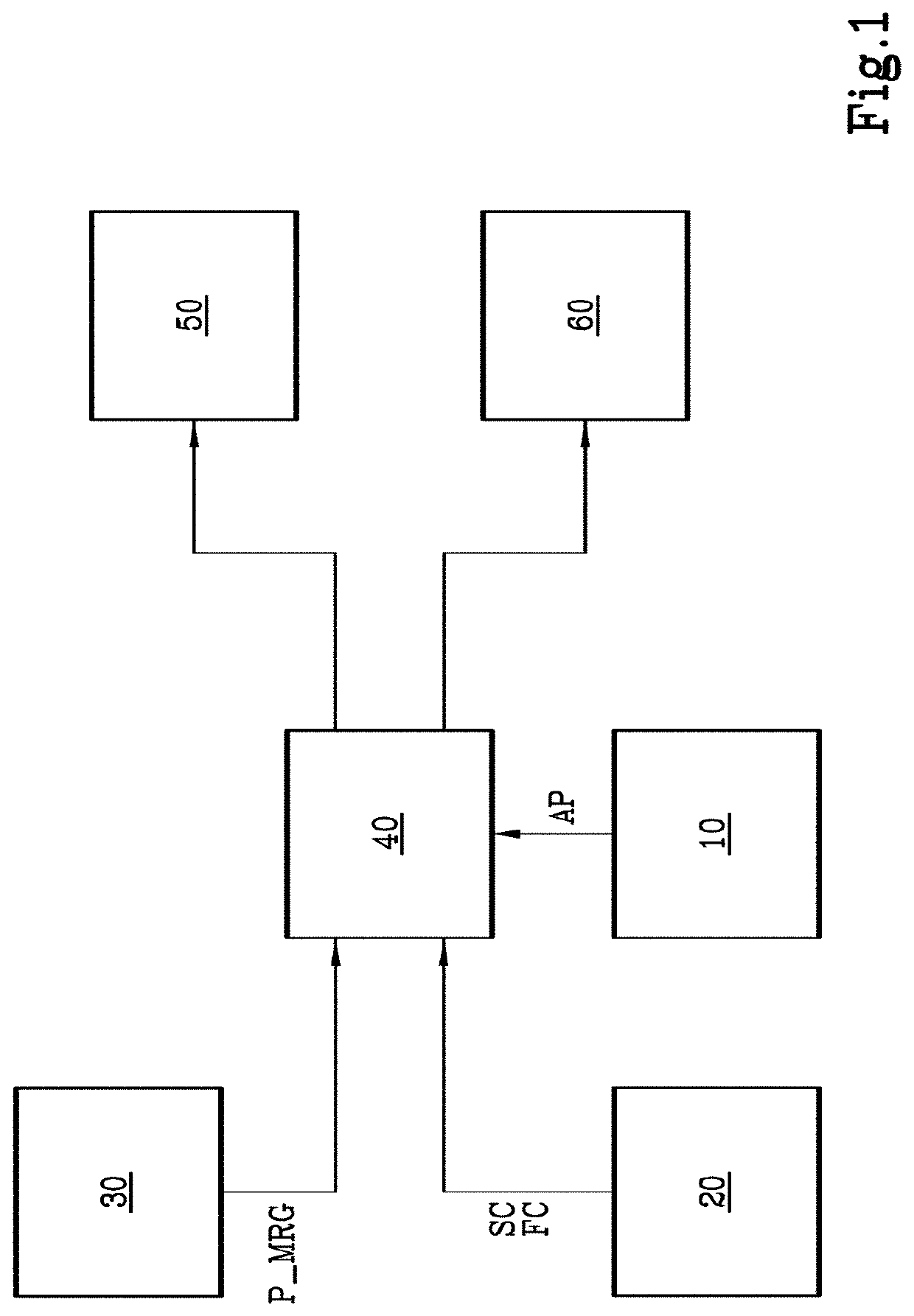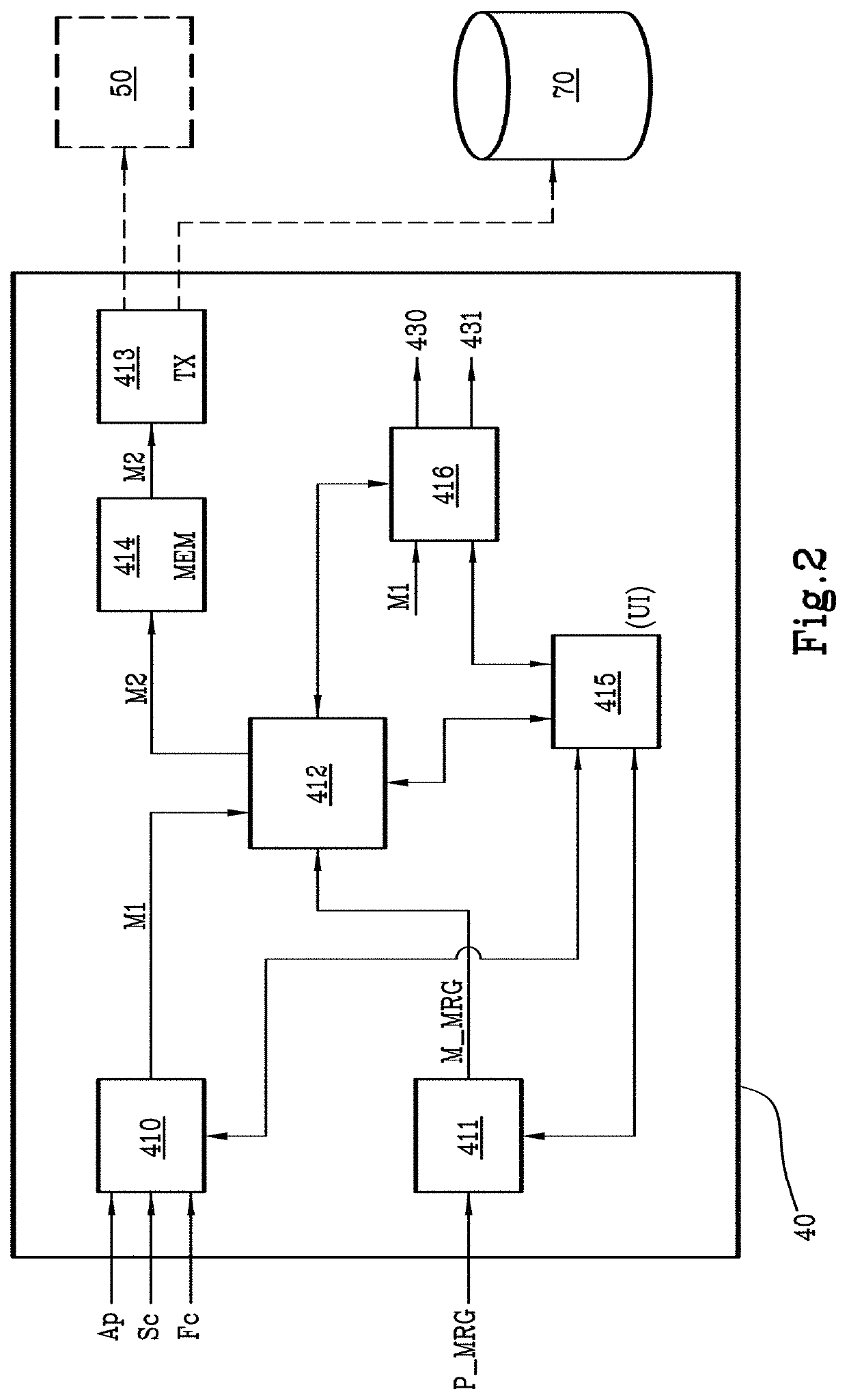System and method for producing a cranial operculum for a living being
a technology of living beings and opercules, applied in the field of system for producing cranial operculums for living beings, can solve the problems of high cost, side effects, time-consuming and expensive in terms of financial and human resources, and the end result can be highly disappointing
- Summary
- Abstract
- Description
- Claims
- Application Information
AI Technical Summary
Benefits of technology
Problems solved by technology
Method used
Image
Examples
Embodiment Construction
[0050]The system for producing a cranial operculum for a living being according to the invention comprises an acquisition device configured to define an area of planned removal of cranial bone (i.e. in a simulation carried out in the pre-surgery phase) on the skull of a living being, a first three-dimensional (or 3D) detection device configured for 3D detection of the skull cap shape and, optionally, of the thickness of the skull to be removed which is included in said area of planned removal of cranial bone, a second detection device configured to detect the points of the margin of the crater in the cranial bone after removal of the part of skull cap included in said area of planned removal, a processing unit configured to process a 3D model of the operculum and send it to an electronic digital fabrication device configured to produce and / or process three-dimensional objects.
[0051]In the present description, the term “digital fabrication” (or “tabbing”) refers to the process whereb...
PUM
| Property | Measurement | Unit |
|---|---|---|
| area | aaaaa | aaaaa |
| shape | aaaaa | aaaaa |
| thickness | aaaaa | aaaaa |
Abstract
Description
Claims
Application Information
 Login to view more
Login to view more - R&D Engineer
- R&D Manager
- IP Professional
- Industry Leading Data Capabilities
- Powerful AI technology
- Patent DNA Extraction
Browse by: Latest US Patents, China's latest patents, Technical Efficacy Thesaurus, Application Domain, Technology Topic.
© 2024 PatSnap. All rights reserved.Legal|Privacy policy|Modern Slavery Act Transparency Statement|Sitemap



